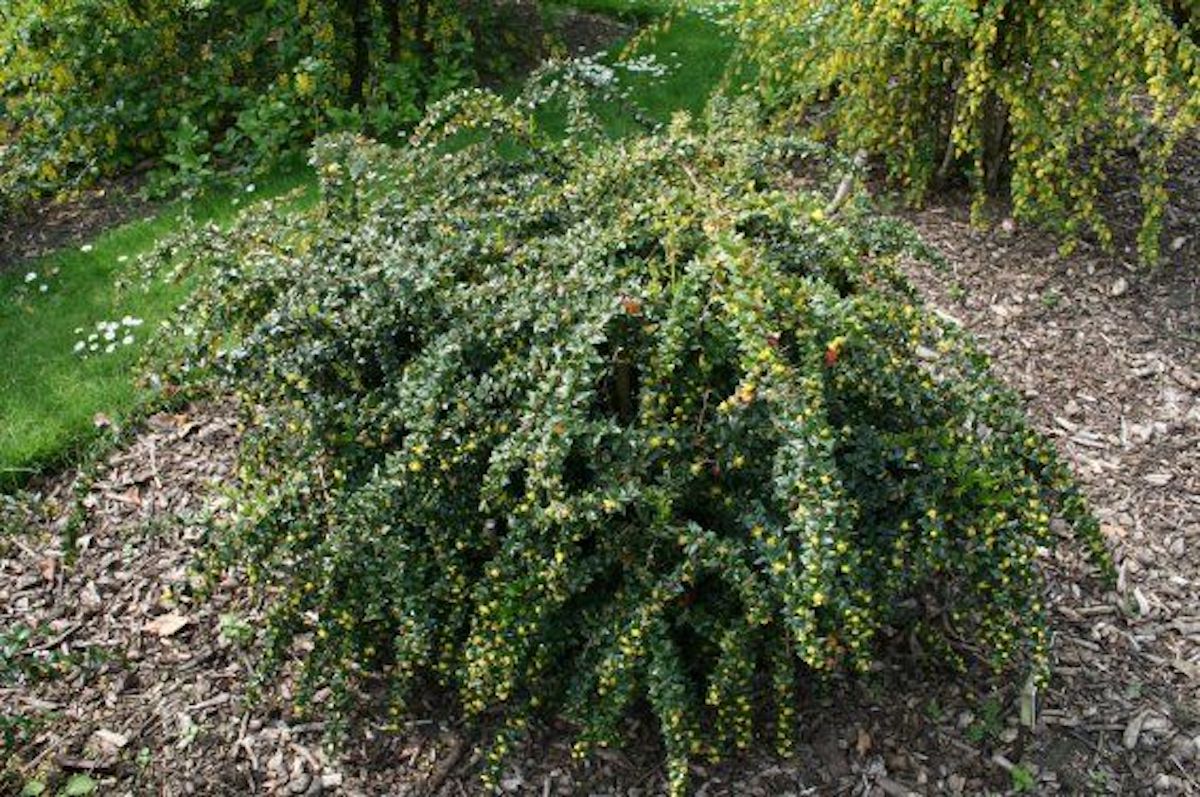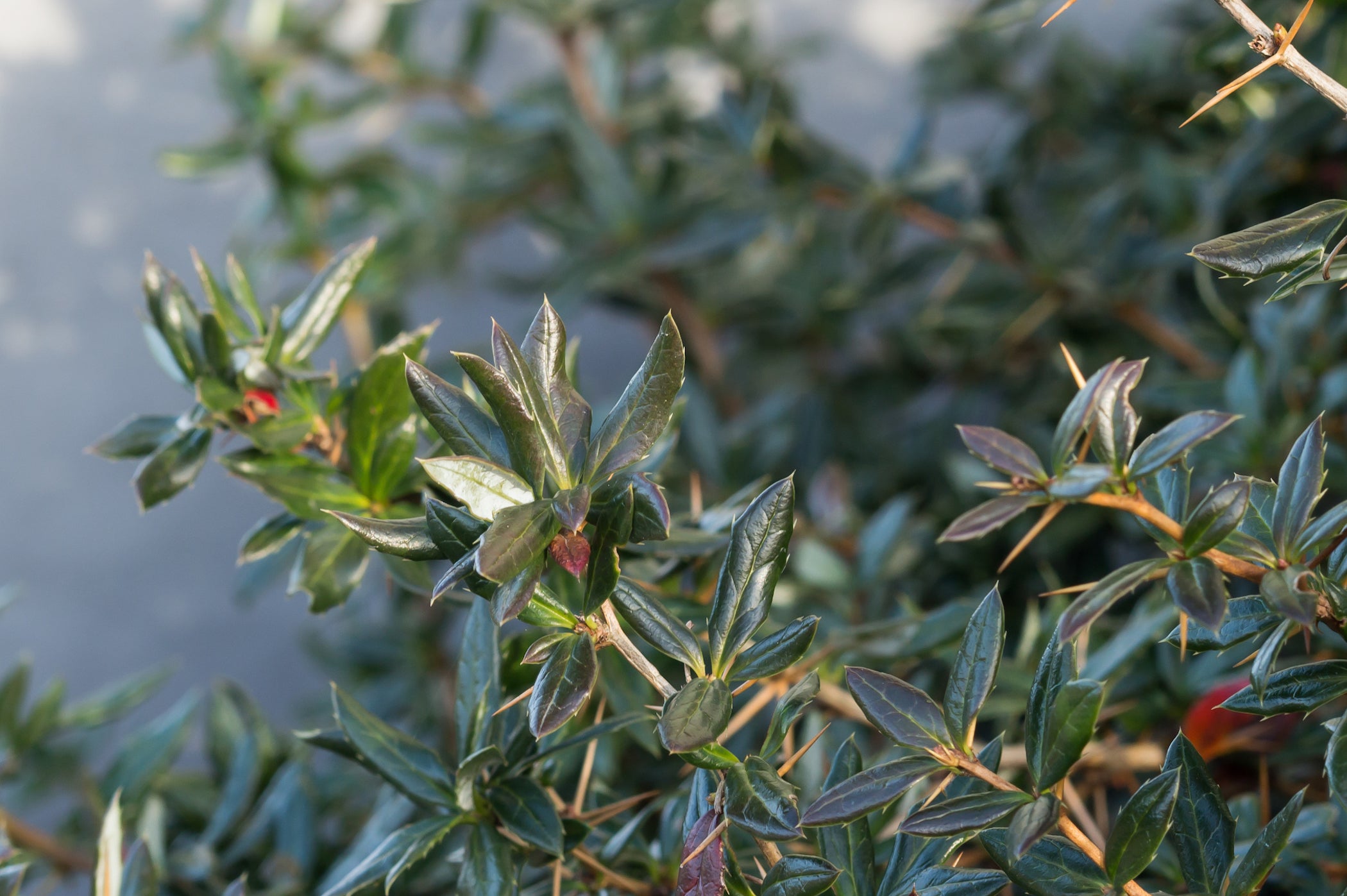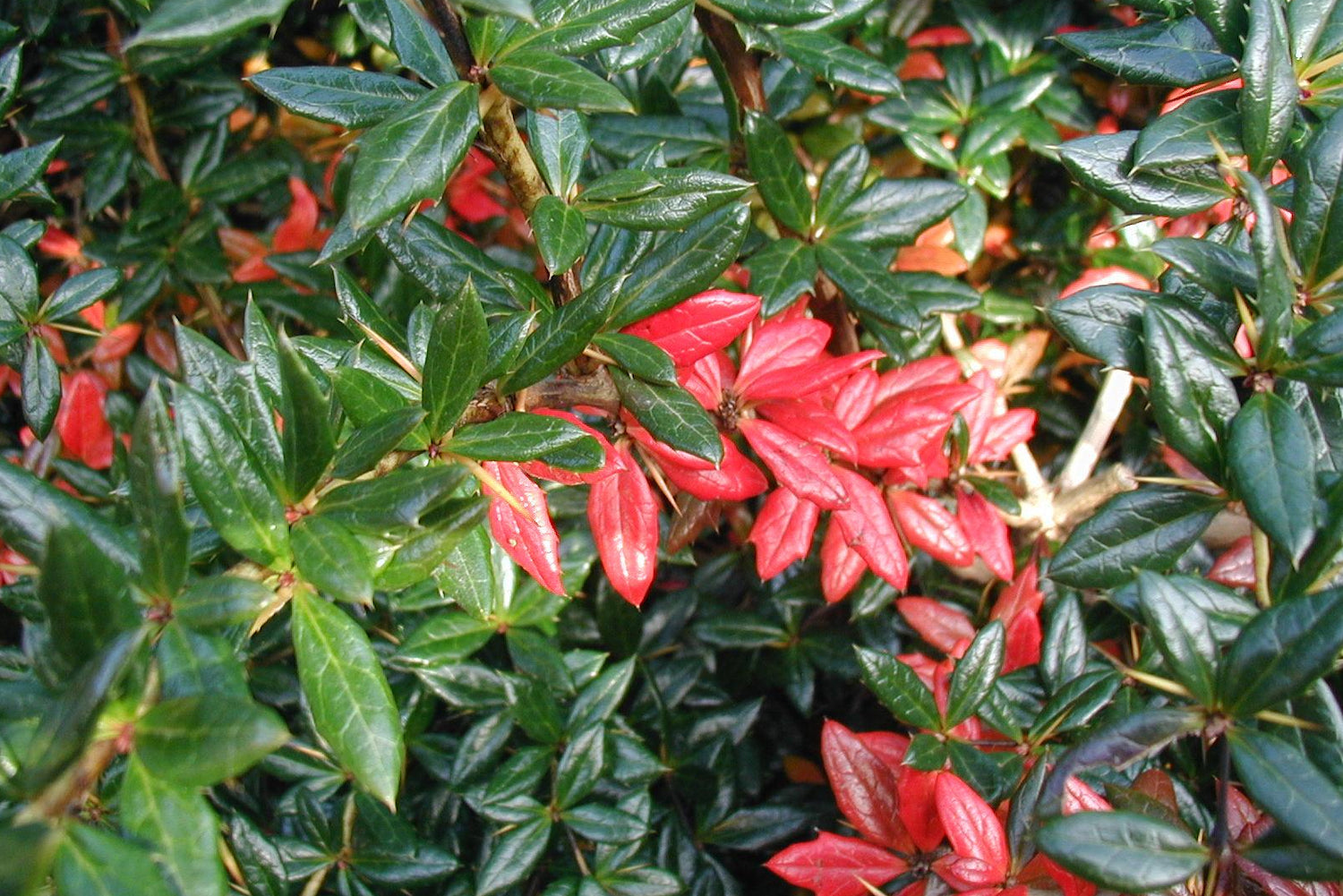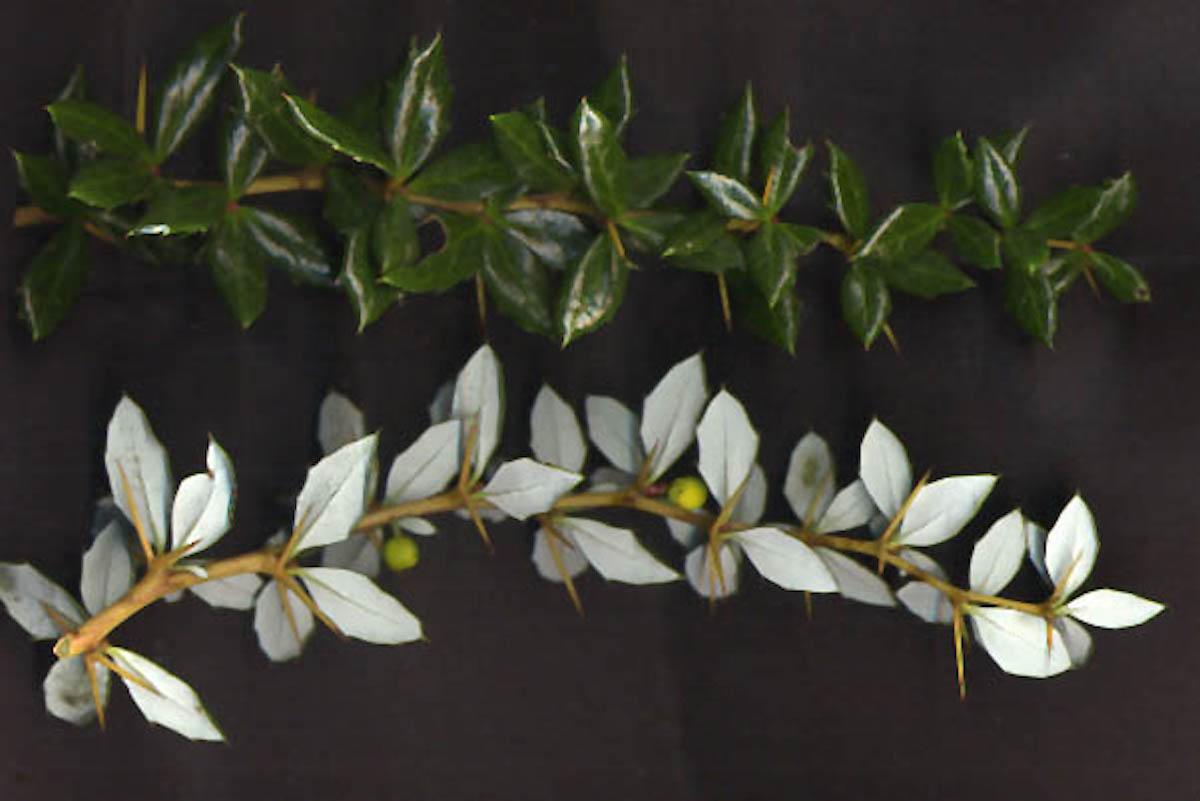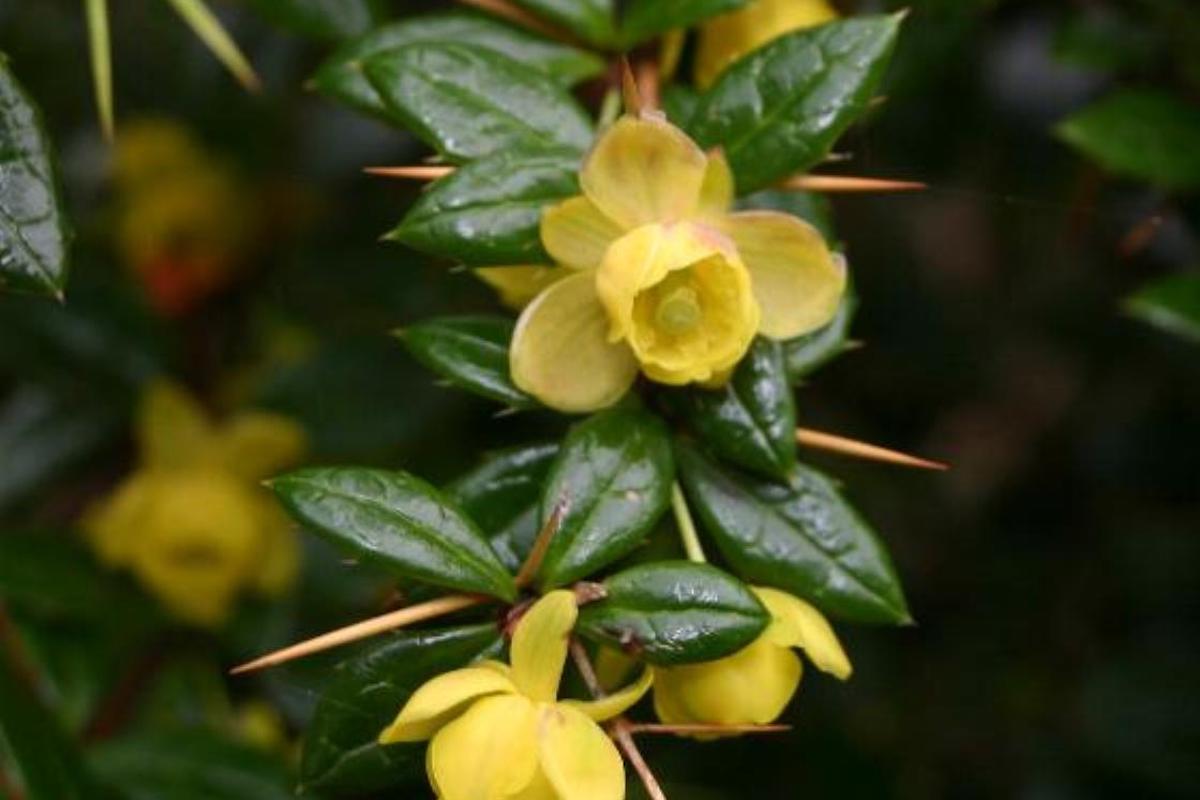Berberis verruculosa
Approx. 0.5 litre pot
About this cultivar:
Berberis verruculosais an evergreen shrub native to western China.
With yellow spines along the twigs the leaves are long, hard, leathery, glossy dark green above, vivid white below. In cold winter weather, the leaves may turn purplish-reddish-green above on exposed shoots. The flowers are small, yellow, and mature into dark purple berries. Has a lovely habit on its own if you ask me, but people often prune or grow it into a hedge or fence. It is prickly, so often used as a barrier plant. Will also grow almost anywhere from full sun to full shade.
Commonly called the warty barberry or warted barberry, It gets its common name from its "warty" stems, that have rounded, more or less identical, raised spots. Indeed, the species name means 'covered with small warts' in latin.
But don't let the name put you off, this is a great plant (warts and all...). The RHS think so and this on thus has the RHS AGM (Royal Horticultural Society Award of Garden Merit).
- Position: Full sun, Partial shade, full shade
- Soil: Almost any soil - grows well in Ballyrobert!
- Flowers: April, May, - berries in June, July
- Other features: Interesting Foliage or Fruit, Royal Horticultural Society Award of Garden Merit (RHS AGM)
- Hardiness: H5 - Hardy in most places throughout the UK even in severe winters (-15 to -10°C), Fully hardy - grows well in Ballyrobert!
- Habit: Bushy
- Foliage: Evergreen
- Height: 105 - 150 cm (3.5 - 5 ft)
- Spread: 105 - 150 cm (3.5 - 5 ft)
- Time to full growth: 10 to 20 years
- Plant type: Shrub
- Colour: Yellow, green
- Goes well with: -
About this genus:
Berberis is a large genus (over 450 species in the wild alone!) of deciduous and evergreen shrubs from 1–5 m tall found throughout the temperate and subtropical regions of the world (apart from Australia). Berberis is a dense prickly bushy that will keep the most intent of intruders at bay, howvere the cultivars we have in our garden make up for this violent nature with fantastic gifts of structure and multitudes of colourful berries that follow dainty spring-flowers. Depending on the cultivar the summer-berries can be pale pink, to orange to white to yellow. Many cultivars also have incredible autumn foliage.
The Latin translation of an Arabic name given to its berries gives Berberis its name. Until quite recently fruits of the Berberis vulgaris species were grown and eaten in the British Isles, often as an appetizer or as a flavouring for meat and fish. The English apothecary and physician, Nicholas Culpeper (1616-54) wrote that "they get a man a good stomach".
The sap, inner bark and roots were also used as a yellow dye for leather and hair. This yellow colour must have been why this plant was thought to relieve jaundice and cure pestilential fever. Interestingly, modern medicine has confirmed that some plant compounds found in Berberis do have anti-bacterial properties and may also be useful in fighting ovarian cancer. Rumour has it the English apothecary and physician, Nicholas Culpeper (1616-54) left a letter dated 2014 stating "I told you so".
Ok – maybe too much info on this genus so far, but I find all this fun and fascinating: Charles Darwin named a Chilean species, darwinii. It was first recorded by him on the Beagle in 1835. Berberis thunbergii, commonly called Japanese barberry, gets its specific epithet from Dutch botanist Carl Peter Thunberg (1743-1828) who reportedly identified this species in Japan in 1784. What where all those horticulturalists doing in Japan and Chile? Sleeping at the wheel...... Ah well, 'Irish Coffee' was supposedly invented at Sydney airport, so rest assured it is not just botanists that steal others thunder.
In the garden Berberis are tough plants capable of growing in all soils, except those that are waterlogged in winter. They also tolerate pollution, hence you see them quite a lot in towns. As long as they are not in complete shade they do fine.
Often thorny plants like Berberis are too aggressive for mixed borders where you would like to go in and work without being attacked by thorns. They can look great planted against a wall, fence, house or in a lawn. It almost an essential for a winter garden. Perhaps try with Pyracantha, Cornus, Forsythia or Euonymus.
Experiment? Despite our love of William Robinson at Ballyrobert we quite like to experiment with prickly plants in more formal mixed-borders; almost like sculpture, complementing, or replacing, shaped Buxus.

